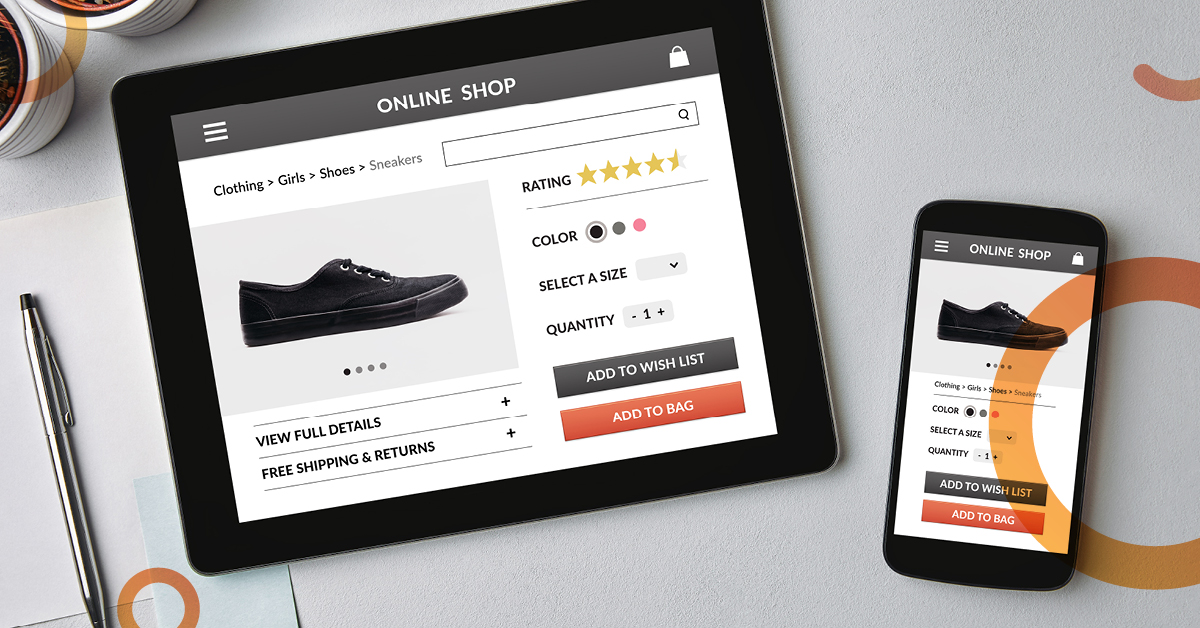Whether a customer makes a purchase relies heavily on the product content. Images and descriptions without ample information can make people second guess their decision and may result in them not proceeding with the sale.
When shopping, we can often choose from different options for a particular product. A phone case might come in ten different colours, or a pair of shoes might have three designs; marketers must account for all this content and ensure its consistency. They also have the difficult job of not only ensuring consistency but enriching it to suit the channel or campaign.
The digital content supply chain is a process that connects product content across its lifecycle and eases distribution. It starts upstream with digital assets created by manufacturers and other primary content creators. These digital assets must then be sent downstream and stored in a repository for retailers and distribution partners. These companies can then enrich the content to suit each channel, overlay it with campaign-specific content, and publish it for consumers to view in print or digital media.
A Product Content Management (PCM) platform supports the digital content supply chain in the following ways:
Take control of the product content lifecycle
Too often, content and merchandising teams spend too much time on administrative tasks that include:
- Manually creating renditions and uploading content to multiple systems.
- Updating product information and manually sending changes to retail distributors.
- Manually content through a workflow with many steps.
To gain control of the product content lifecycle, you need to reduce the number of manual processes and implement automated and organised workflows for sending content through the digital content supply chain. Integrated platforms and process flows can trigger manual functions, which becomes especially useful when you need to change product information for a campaign due to physical supply issues or recalls.
A PCM platform makes it easy to upload, curate, distribute and update digital assets and their related product and technical content between departments, suppliers and partners. These platforms manage task automation, integrate with other platforms, and provide a central digital asset repository. By automating the product content lifecycle, you can feel confident that you have the most up-to-date product information and can take control of the product content lifecycle.
Enhance customer experiences with high-quality content
By taking control of your content and leveraging systems that automatically update products, you can reconsider how you deliver customer experiences.
For example, imagine you are shopping for an outfit to wear at a formal business event. You need a suit, but you also need a shirt, shoes and a bag that will match. If you are shopping online, you want the content to be as accurate as possible, so you can confidently choose your products. You might also want to see matching products from the same collection to aid your decision.
To deliver an experience like this to your customers, you need a PCM platform to link associated products and serve up a customer experience that guides the buying journey. A CDP and personalisation platform can help you create these experiences by using content from your PCM to suggest products based on rules and analytics.
Deliver consistent content for products and sub-products
The digital content supply chain makes working with agencies or retail distributors much easier. You might have new content for a product that you have supplied to each of your distributors, but not all of them have updated it yet. Suddenly, you have customers viewing inconsistent product information.
An issue like this magnifies when you no longer deal in entirely single products. You now have product ranges, each of them available in different colours, styles and sizes, creating a range of sub-products. So, you need accurate representations of each sub-product, and the images must be consistent so people know they are looking at the same product in a different colour or design.
PCM provides a centralised repository to support the digital content supply chain, making it easy to create and update product information. These systems automate digital content distribution for products and sub-products to multiple channels, including websites, mobile apps, and social media. They also ensure that your distributors have the latest product content.
Creative Folks’ Product Content Management solutions
When you manage data for thousands of products from multiple suppliers and have an omnichannel experience, you need more than a Product Information Management (PIM) system. You need a coordinated PCM platform that brings data into a single source of truth and supports your digital supply chain.
Creative Folks understand the nuts and bolts of the product life cycle and can help you implement the technology and processes to manage product data and omnichannel content delivery. Visit our Product Content Management page for more information.



 Previous
Previous



